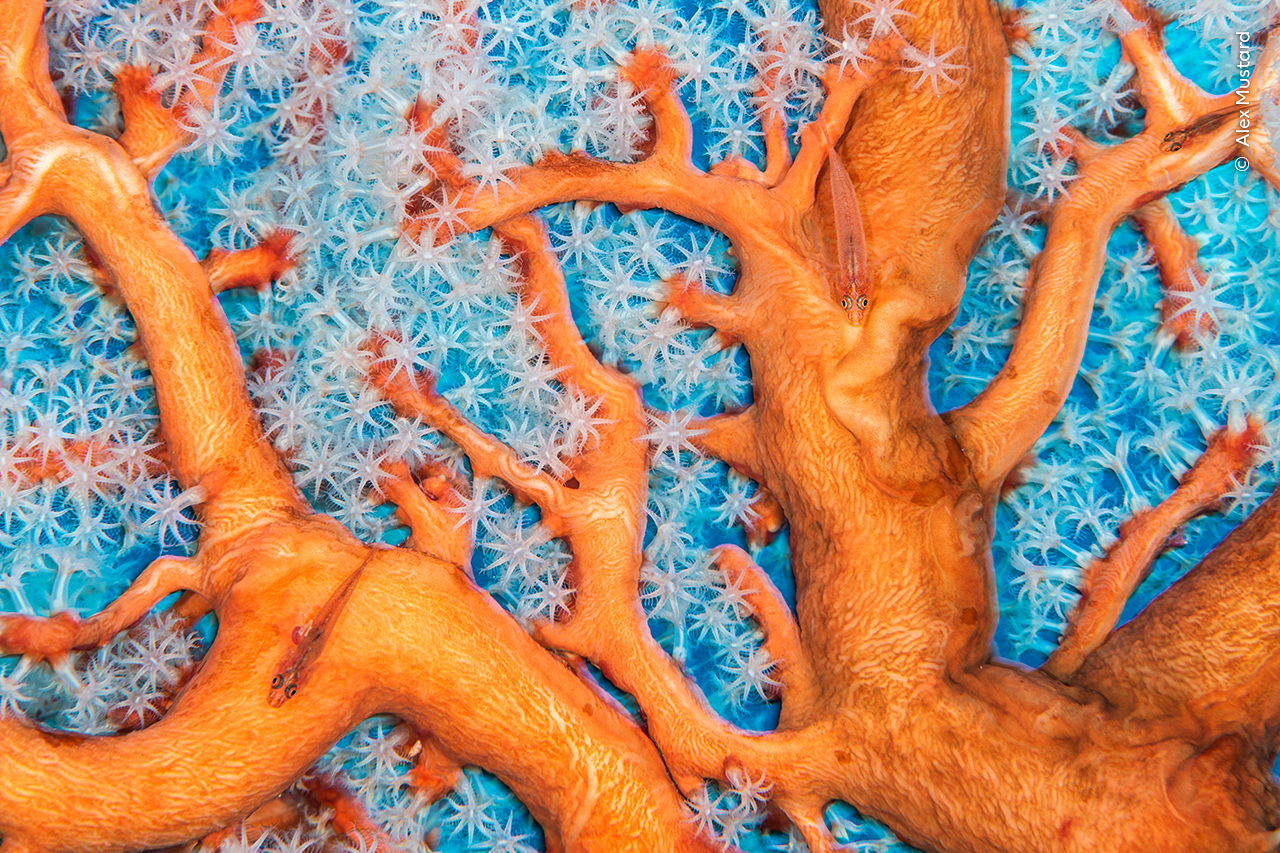
Ghost gobies decorate the branches of gorgonian sea fans, which they use not only for shelter but as a feeding platform. Corel reefs support a diversity of interconnected species, but are at risk from warming seas due to climate change.
Coral Connections © Alex Mustard, Highly Commended in the Wildlife Photographer of the Year 59 Under Water category.
First look at Wildlife Photographer of the Year 59
Emma Caton
First published 31 August 2023
From piggybacking macaques and enchanting mushrooms to the daring rescue of animals from war-torn Ukraine, Wildlife Photographer of the Year is back again for another show-stopping year. Here’s a glimpse at some mesmerising images from the new exhibition.
Book your tickets now
Mason Bee At Work by Solvin Zankl
This mason bee is hard at work building the roof of its nest.
Solvin knew the bee was memorising landmarks so it could find its nest again, so he gradually edged his equipment closer each time it left so as not to disorientate it. After two hours, the bee was using his camera as a landmark too.
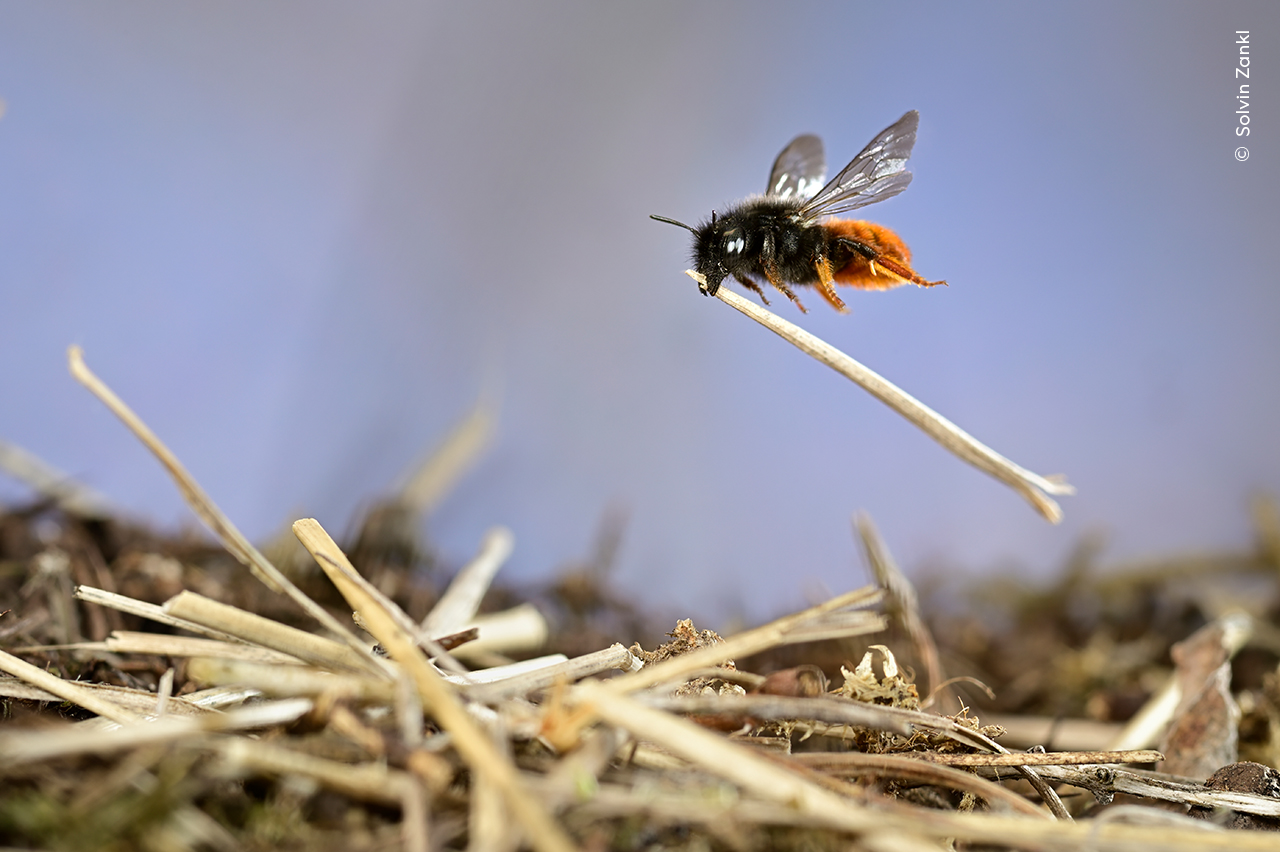
Mason Bee At Work © Solvin Zankl, Highly Commended in the Wildlife Photographer of the Year 59 Behaviour: Invertebrates category.
Two-coloured mason bees use snail shells for egg laying. They pack the shell with pollen and nectar for their larvae, then seal it with grass and sticky saliva. Humans sometimes consider snails to be pests, but this species could not survive without them.
Mushroom Magic by Agorastos Papatsanis
Agorastos illuminates swirls of spores appearing to dance beneath the gills of a deer shield mushroom.
,%20Wildlife%20Photographer%20of%20the%20Year.jpg)
Mushroom Magic © Agorastos Papatsanis, Highly Commended in the Wildlife Photographer of the Year 59 Plants and Fungi category.
Intent on revealing the magic of spore dispersal, Agorastos set up umbrellas to minimise airflow, positioned a light and a reflector and angled his camera to highlight this often unobserved event as waves of ethereal dust flowed.
Billions of these tiny, egg-shaped spores are dispersed by air currents. This wood-rotting fungus most often emerges on the stumps and fallen branches of broad-leaved trees.
Firebirds by Elza Friedländer
A pair of white storks are visible in the shimmering heat against the burnt ground caused by a controlled fire.
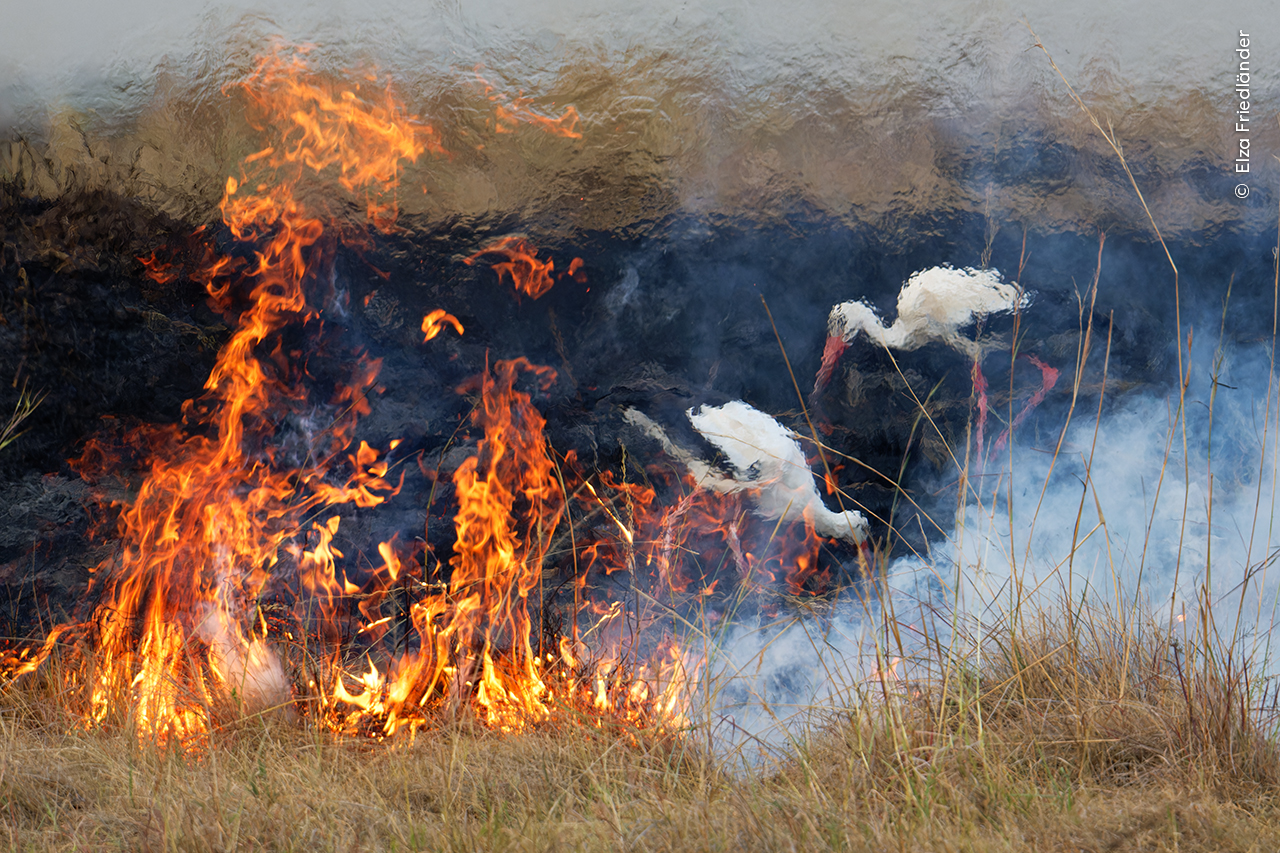
Firebirds © Elza Friedländer, Highly Commended in the Wildlife Photographer of the Year 59 Behaviour: Birds category.
As Elza had anticipated, shortly after the controlled fire was lit on an area of Kenya’s Maasai Mara, hundreds of birds arrived, particularly storks and kites. Most kept a reasonable distance, but the storks pressed up to the front line in search of easy prey.
Starting fires is a common but controversial way of managing grasslands to stimulate lush new growth and to control the spread of bushland. But it can be a dangerous tactic, especially in times of drought when fire spreads easily.
Snow Bison by Max Waugh
Max watched from his vehicle as a plains bison started kicking up flurries of snow over its bulky frame. It began to head downhill towards the road, gathering momentum. Pulling up to give them space to cross, he managed to create this original composition.
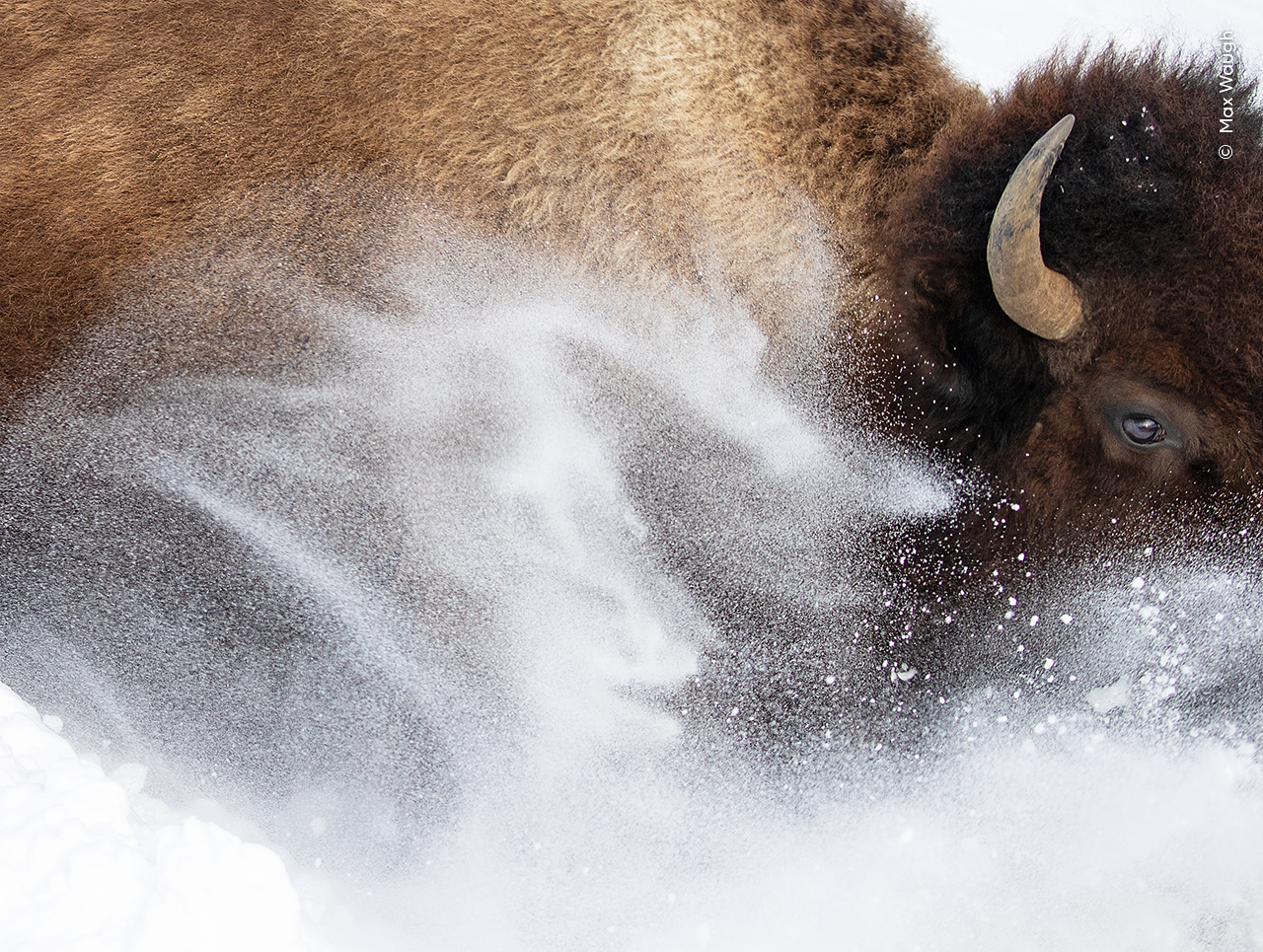
Snow Bison © Max Waugh, Highly Commended in the Wildlife Photographer of the Year 59 Animal Portraits category.
Once abundant and wide-ranging across most of North America, bison were hunted to near extinction by the late 1800s. Numbers are slowly increasing but are confined to discrete populations, dependent on conservation management and constrained by ownership and land use changes.
War Cub by Michał Siarek
Michał documented efforts to evacuate animals, including those in private ownership, such as tigers, from across war-torn Ukraine.
‘That night changed me,’ he says. ‘Hearing the cry of a lion still in the truck made me decide to help with the next evacuation run.’
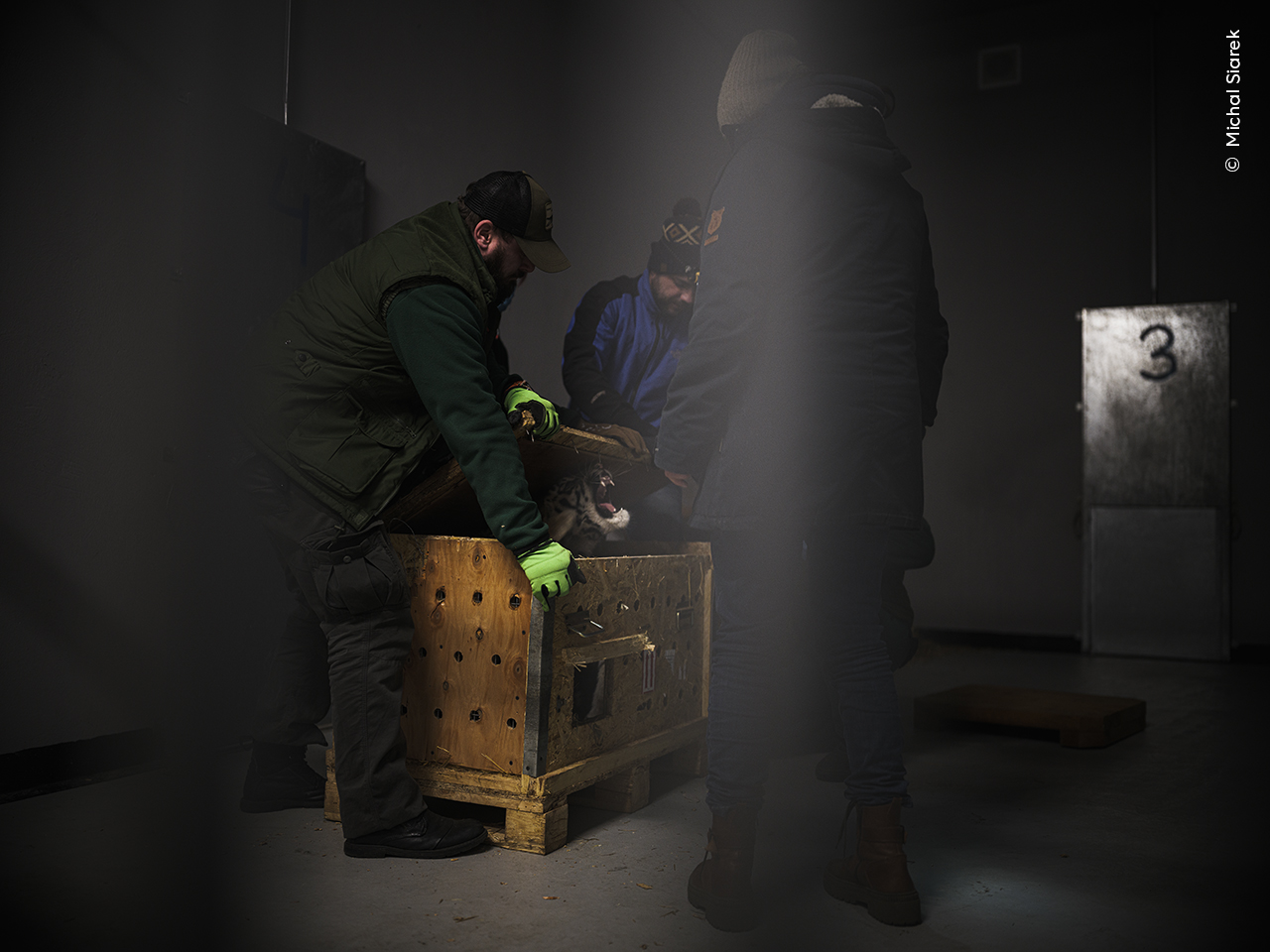
War Cub © Michał Siarek, Highly Commended in the Wildlife Photographer of the Year 59 Photojournalism category.
Many of the animals were rescued from fighting hotspots in eastern Ukraine in 2022. At the Polish border, they were put in new crates and rushed to Poznań Zoo, then on to sanctuaries in Europe. Since then, more than 200 animals have been saved.
Michał photographed this moment when the team from the zoo opened a crate to check on an evacuated tiger cub.
Coot On Ice by Zhai Zeyu
Zhai waited in the cold, watching the coots as they endeavoured to move across a frozen pond in northeast China. One coot had been scrambling in the water for food and eventually caught a loach. The bird struggled to stay upright on the ice as it attempted to subdue its wriggling prey.
,%20Wildlife%20Photographer%20of%20the%20Year.jpg)
Coot On Ice © Zhai Zeyu, Highly Commended in the Wildlife Photographer of the Year 59 10 Years and Under category.
Common coots are among the most widespread birds, with a range that extends across Europe and Asia into North Africa and Australia. They require large areas of open water with nearby cover for nesting, so populations can be affected when their habitat is disturbed by humans.
Forest Rodeo by Atsuyuki Ohshima
Atsuyuki’s quick response helped him to capture this unusual interaction.
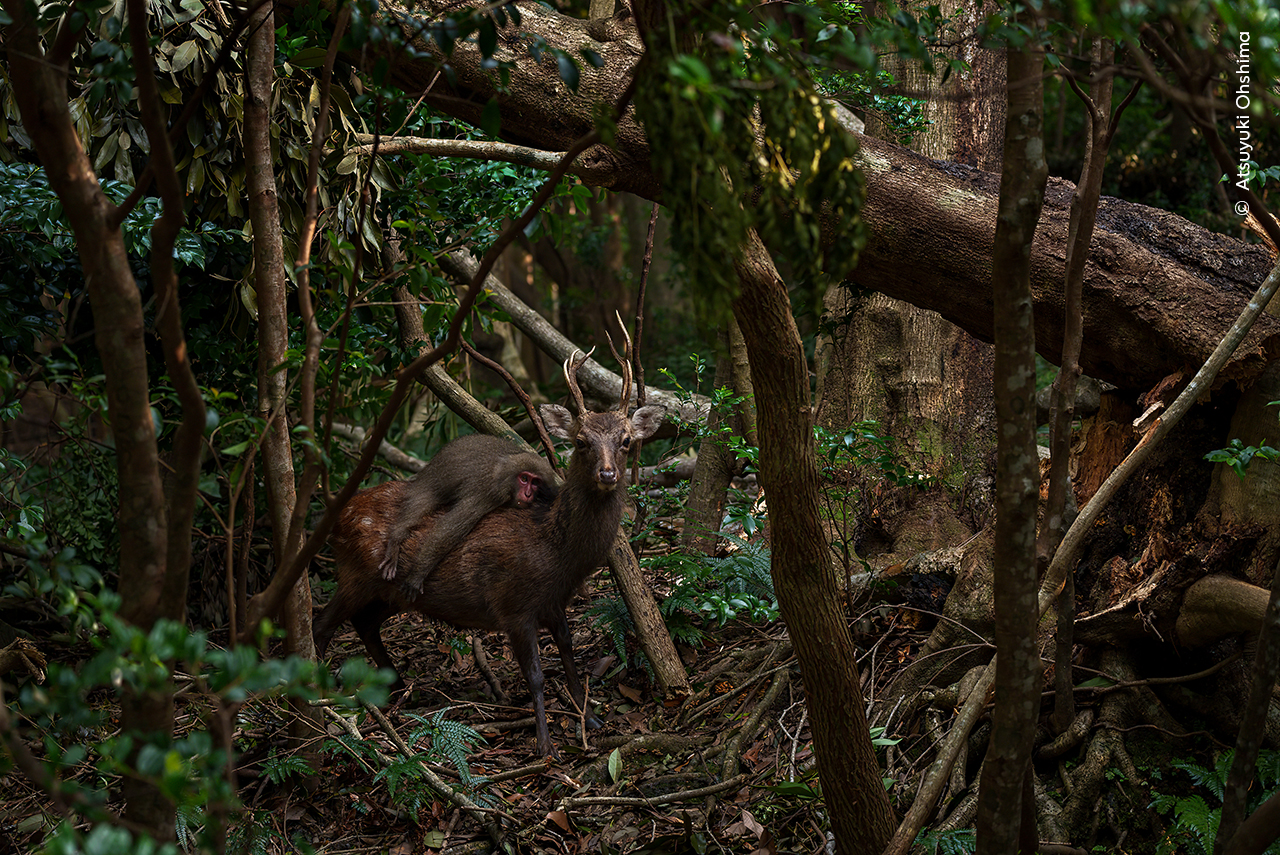
Forest Rodeo © Atsuyuki Ohshima, Highly Commended in the Wildlife Photographer of the Year 59 Behaviour: Mammals category.
A sudden movement behind the sika stag caught Atsuyuki’s eye. In an instant, using a tree as a springboard, a young Yakushima macaque jumped onto the deer’s back.
The rodeo riding of deer by the monkeys of Yakushima Island is rare but not unheard of. Young male macaques have been seen clinging to female deer and trying to mate with them. In this case, however, the macaque was a young female, appearing to just be enjoying a free ride.
Fight to the Death by Jasper Doest
Jasper shows the final moments of extreme distress felt by an elephant hit by a train.
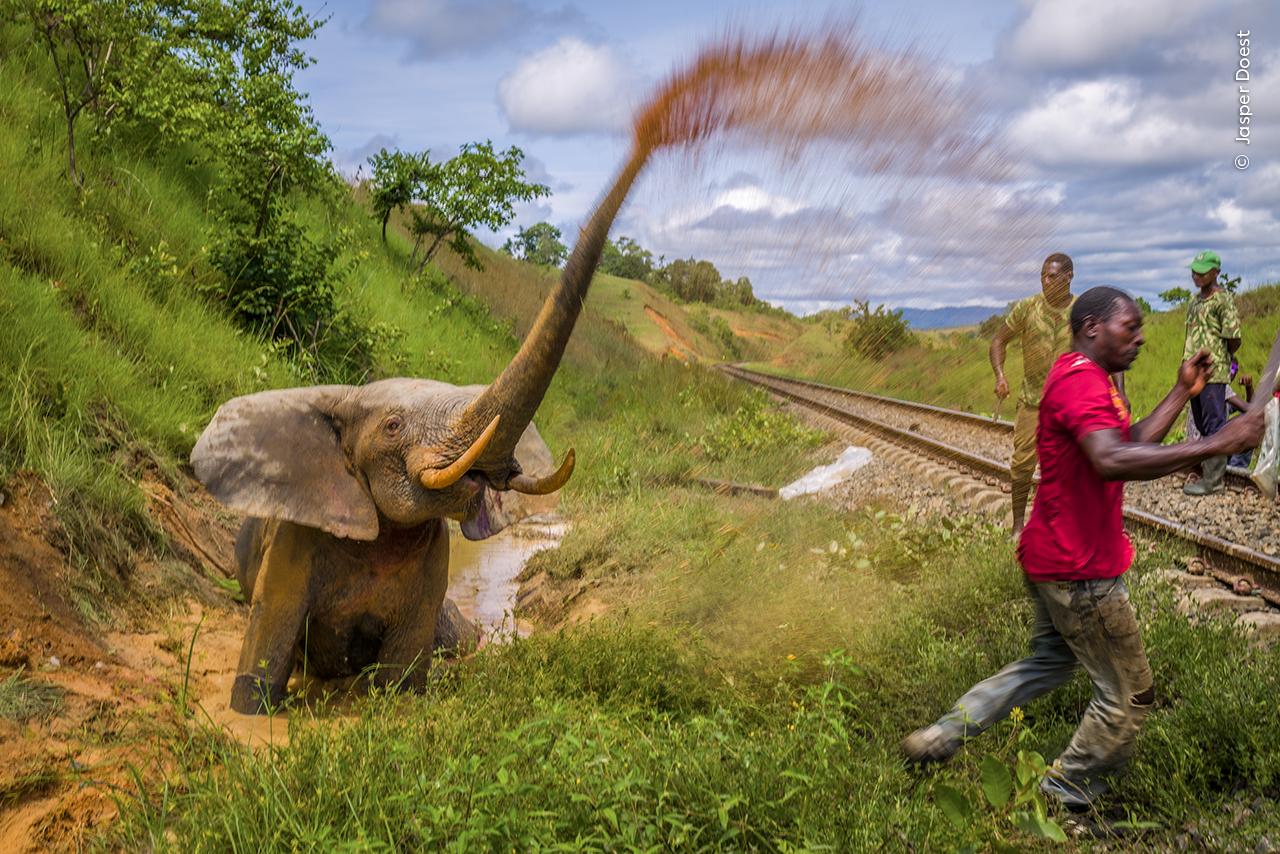
Fight to the Death © Jasper Doest, Highly Commended in the Wildlife Photographer of the Year 59 Photojournalism category.
The collision shattered the elephant’s hip beyond repair, and it had to be killed. Jasper, who was in the park on a different assignment, witnessed the episode.
Despite the park director’s efforts to get the train company to reduce train speeds, there are still regular wildlife-train collisions in Lopé National Park, including up to 20 incidents with elephants each year.
The trains transport manganese from the Moanda Mine, which holds 25% of known reserves. Manganese is a metal used in iron and steel production.
Race for Life by Donglin Zhou
Donglin witnessed the rare event of a snow leopard hunting a Pallas’s cat.
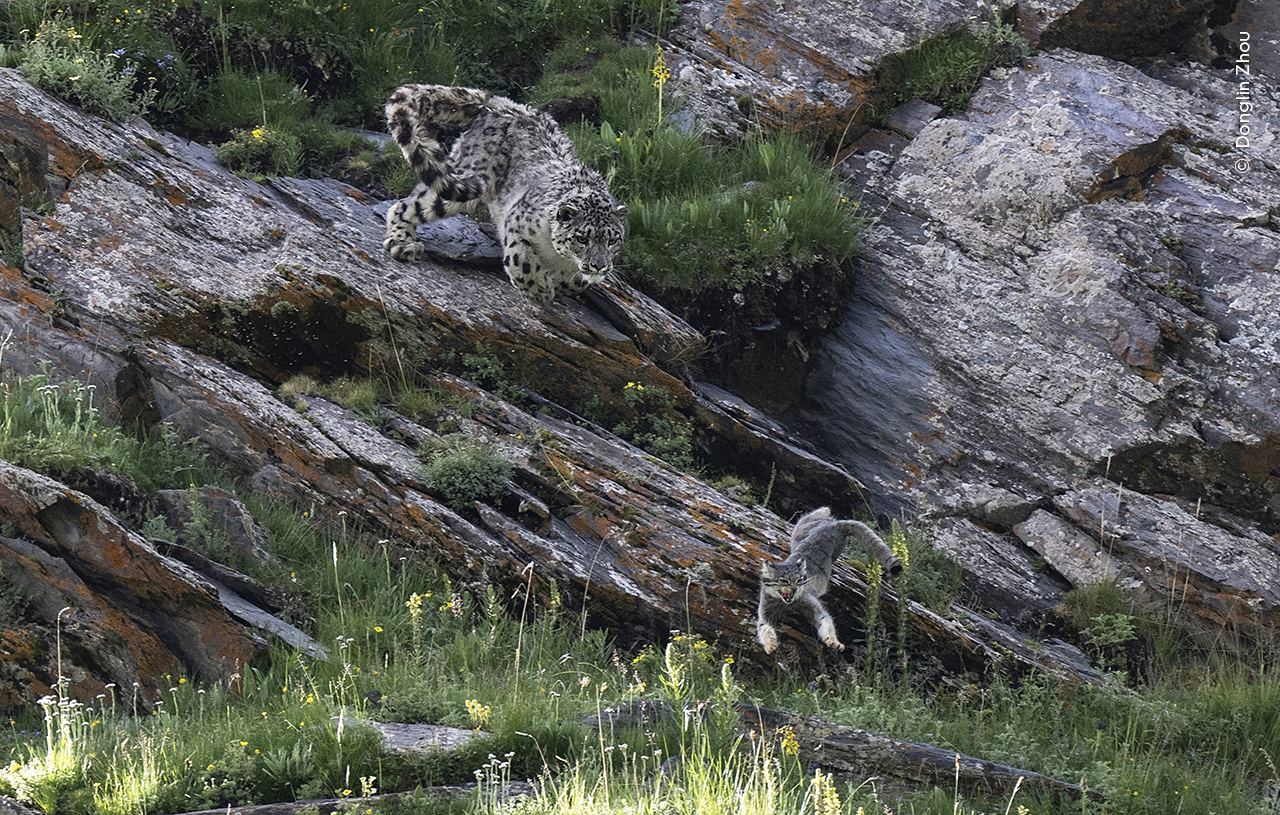
Race for Life © Donglin Zhou, Highly Commended in the Wildlife Photographer of the Year 59 Behaviour: Mammals category.
When the snow leopard sprang into action, she assumed it was after a marmot. ‘The Pallas’s cat blended in so well with the rocks,’ recalls Donglin. In less than a minute, the snow leopard had its prey in its jaws.
Both species are well camouflaged and are hard to see. While large birds of prey and wolves are known to hunt Pallas’s cats, it’s rare to see them hunted by snow leopards.
The Face of the Persecuted by Neil Aldridge
Neil highlights the injuries sustained by a fox.
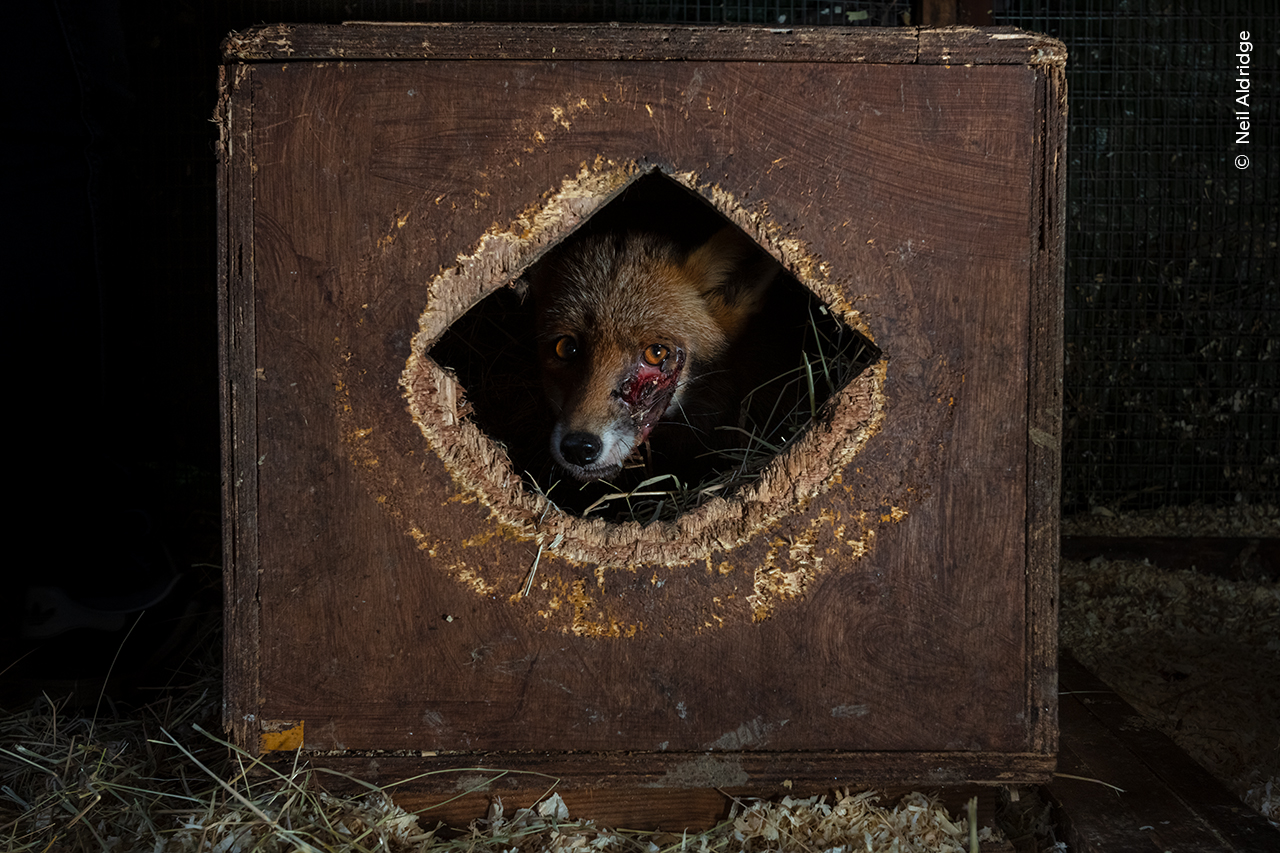
The Face of the Persecuted © Neil Aldridge, Highly Commended in the Wildlife Photographer of the Year 59 Photojournalism category.
The fox’s permanently exposed teeth and eye socket were on full display as it peered out from its makeshift den in the rehabilitation centre. This image is part of Neil’s nine-year project documenting Britain’s complex relationship with the red fox.
Since 2005, it’s been illegal in England and Wales to poison foxes, use dogs to hunt them or to block or destroy foxholes. The injuries suffered by this individual were likely inflicted by dogs illegally sent into the fox’s den to flush it out.
Don't miss a thing
Receive email updates about our news, science, exhibitions, events, products, services and fundraising activities. We may occasionally include third-party content from our corporate partners and other museums. We will not share your personal details with these third parties. You must be over the age of 13. Privacy notice.
Follow us on social media